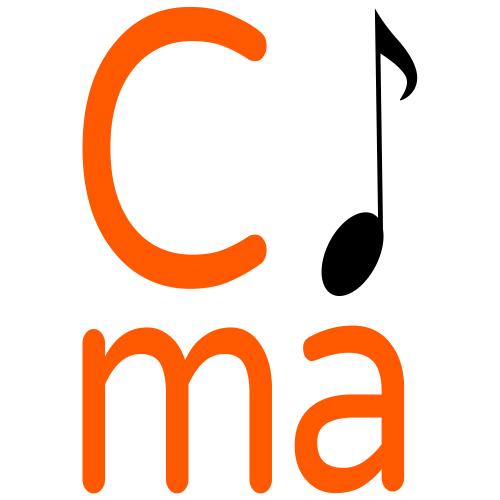Conducting technique; an introduction by Gianmaria Griglio
According to some, conducting technique - just for clarity, I’m referring to orchestral and not choral conducting - it is a debatable point. Conducting technique has been the subject of numerous discussions over the years, most of them with a dubious thesis and, more importantly, conclusions. Here's an introduction to the matter.
Does conducting technique exist?
Some schools believe that conducting technique essentially boils down to a few patterns while the art of conducting is demanded to a blurry definition of charisma. For others, conductors are born, not made, therefore there is no conducting technique per se but rather the innate disposition of an individual to communicate through gestures.
This type of approach, on top of colourful suggestions like “Just look at the conductors of the past” or “Bernstein conducted an entire movement of a symphony with his shoulders” and so forth, have created a void in many conducting “courses” and put students in the dangerous position of not realizing that most of an orchestra’s mistakes are due to the conductor’s shortcomings.

Gianmaria Griglio
I certainly do not want to imply not to watch or learn from the great masters of this profession. However, parroting is not going to be helpful, if not harmful, especially for beginners.
If you play an instrument, no teacher will tell you that there is no technique you need to learn. If the sound that comes out of it is not pleasant, you won't blame the instrument (provided you have a decent one), would you? Yet, many young conductors are not taught that conducting, like playing any instrument, requires technique, and that a good technique allows a conductor to influence the sound of an orchestra, to shape a phrase without wasting words and, ultimately, to make music instead of looking like a useless metronome.
What is conducting technique?
The problem is, quite simply, decoding it: while we’ve had numerous educators, teachers, virtuosi who exploited the possibilities of various instruments and took the time to put on paper a how-to method, the same has not happened with conducting. The number of conducting technique books that do try to offer a practical guide to it is minimal.
Conducting technique methods
Looking around, you can find some that seem to be praised left and right for no good reason like The Grammar of Conducting by Max Rudolf, which limits conducting to beating patterns (a short-sighted vision I wouldn’t call conducting at all).

Then you have the ones tied to their creator: the Saito Method, the Musin method, the Scherchen method. All valid approaches for one reason or another.
Ilya Musin‘s philosophy seems to be the closest to translating into gestures the music printed on the page: “A conductor must make music visible to his musicians with his hands. There are two components to conducting, expressiveness and exactness. These two components are in dialectical opposition to each other; in fact, they cancel each other out. A conductor must find a way to bring the two together.”

True: but how?
It seems to me that these methods fall short on one aspect: they set rules but fail to go beyond them. With one exception, at least that I know of Harold Farberman‘s The Art of Conducting Technique, is the only textbook I’ve read that addresses practically the what-and-hows of being a conductor and translating music into gestures — of course, having been a student of his makes things simpler.
More often than not, teachers do not have a direct answer to straightforward questions like: “how do I make a crescendo?“. They will (hopefully) show you: but if they cannot explain it in a way that it can be reproduced it means that they found a way to do it which only works for them.
Farberman decoded the alleged mystery behind conducting with a ground-breaking approach that gives conductors new ways to build their technique, offering direct and practical answers to direct and practical questions.
A set of rules?
Conducting technique is not just, like for any instrument, a set of rules and exercises that any student can follow and practice: that’s only the starting point. In a way, it’s like practising scales: it’s a dry exercise per se, but when a scale is part of a phrase it comes very handy to know how to do it and what to do with it. As a player, you end up owning the scale, and when you perform, you don’t think of it as a scale; instead, you shape it within the musical structure.
Likewise, in conducting the set of rules becomes a natural thing, and the music makes the actual technique. Or, in other words, the music makes the technique. That’s what makes it exciting and, above all, useful.
Thank you,
Gianmaria Griglio

A new perspective on conducting technique - online conducting course
GianMaria Griglio created the course "Pass the Baton" for iClassical Academy.
Take your conducting to the next level by learning how to break patterns logically and practically: you will learn how to look at a score from a different point of view, building your technique from the music itself, and becoming much more effective in your conducting. More info here
Gianmaria Griglio

Winner of a fellowship at the Bayreuther Festspiele, Gianmaria Griglio’s conducting has been praised for his “energy” and “fine details”, quickly captivating his audiences time and again with his vibrant and dynamic interpretations.
Long an advocate of contemporary music, Gianmaria Griglio took part in the first recording of music by American composer Irwin Bazelon, conducted the world premiere of Harold Farberman’s opera The Song of Eddie, a candidate for the Pulitzer Prize, and has served as Music Director of International Opera Theater Philadelphia for four years, in addition to appear as guest conductor of many orchestras around the world. Gianmaria has been invited regularly as a guest teacher at the Conductors Institute, at Bard College, NY.
Gianmaria Griglio is presently Music Director of Opera Odyssey.
